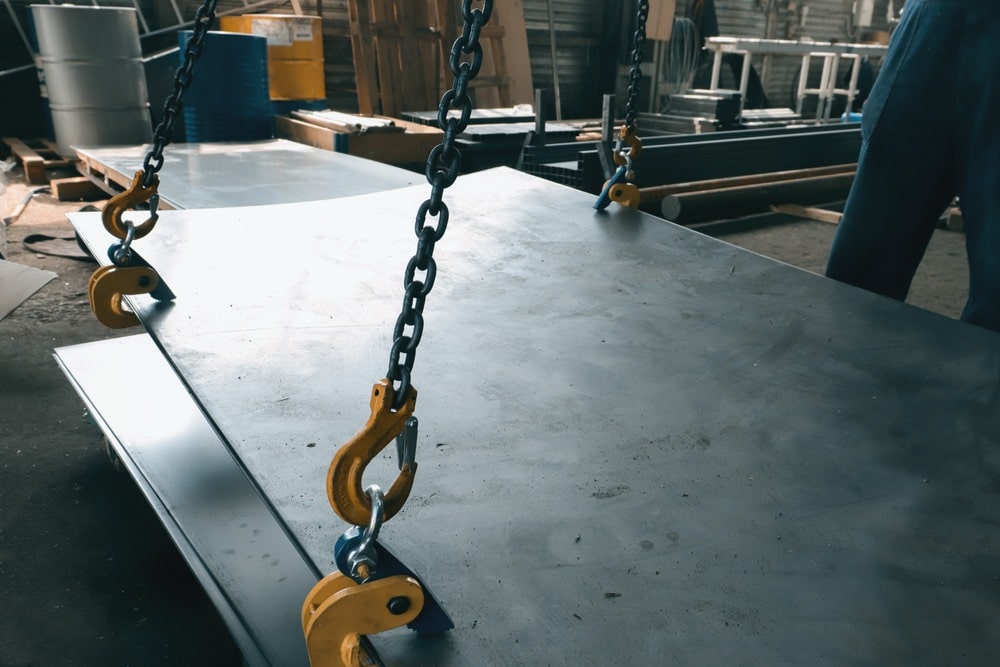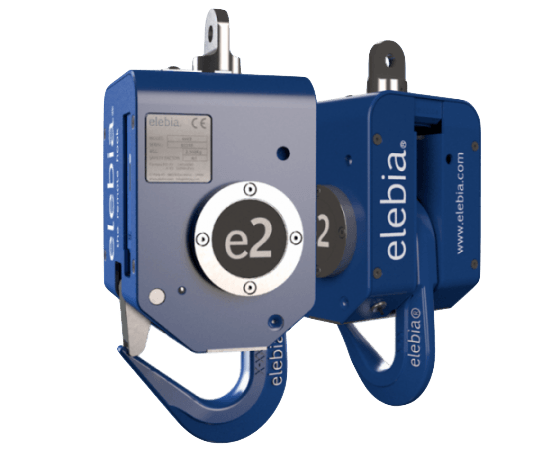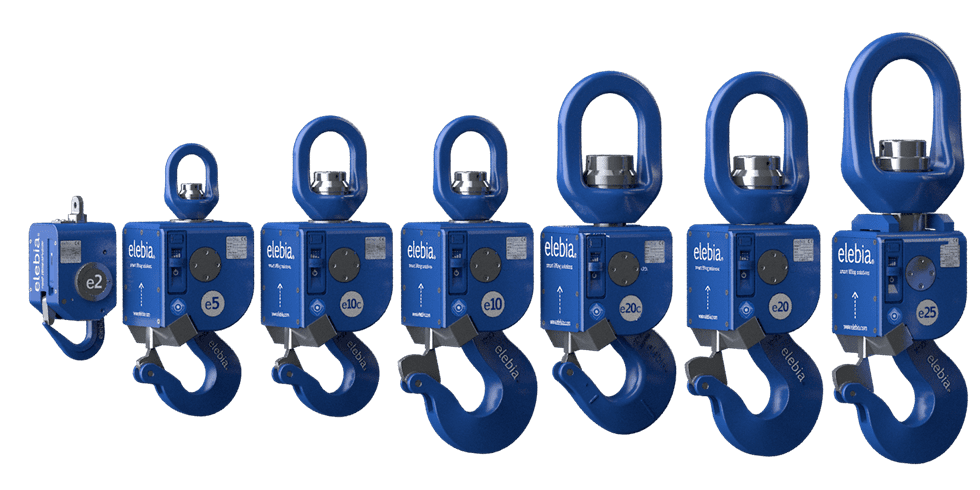Below-the-Hook Lifting Device
26 August, 2021 - Editorial Team
When moving a load from one place to another, it is always a priority to ensure safety and efficiency, and using the correct below-the-hook lifting device is the best way to do it.
What is a below-the-hook lifting device?
A below-the-hook lifting device is a mechanical lifting tool that attaches to a lifting apparatus and used to hold the load firmly and securely. It then moves the weight from one place to another.
Most below-the-hook lifting equipment operate mechanically, but can also perform pneumatically, electronically or hydraulically when unique controls are made.
Components of a below-the-hook lifting device
The components that make up below-the-hook lifting gear are a latch, bail, a lifting lug, rigging hardware, a hook, and a gusset. A latch holds the lifter in either an open or closed position. The rigging hardware connects with a lifting lug, which acts as the point of attachment for the rigging equipment through the hook.
The bail is the opening where the hook of the crane holds. Bails can be pin or plate in style. A gusset on these lifting equipment adds sturdiness to the area of extreme stress and usage. The gusset is a well-reinforced welded plate that is solidly built for its purpose.
Below-the-hook lifting gear have many applications depending on which type of device you are using. Their most basic use is the transportation of different kinds of loads from one place to another and other lifting tasks. Other applications include:
Types of below-the-hook lifting devices
There are many different types of lifting devices costumed to serve different purposes in the logistics industry.
Gripping lifters
As their name suggests, gripping lifters are used to grip loads. They use indentation or friction, which brings pressure to grip a load and they possess tong grabs that imitate a scissor in how they get hold of a load. Finally, they can be used to either lift or turn a charge after gripping it.
Sheet lifters
They are used for loads made of sheets of wood. With its two claws, they hold a load by wrapping around the edges. The claws have a lip on its lower part to prevent the sheets from falling out of the filter
Beams
A beam is used to provide sufficient protection for the load and also controls the movement of the cargo. Beams are made from fabricated metal and have multiple load-lifting points. But first, let’s look at the various types of beams. They include lifting beams, spreader beams, and spreader bars. Lifting beams are long beams that are heavier than spreader bars. Their advantage is that they have well-reduced headroom for lifting tasks. The spreader beams aid in load balancing and control. Spreader bars are lighter and affordable than lifting beams. Their function is to hold a sling apart to the lifting distance.
Die turners
Die turners are generally used to turn large dies securely instead of flipping the dies.
Magnet lifts
This type of below-the-hook hook lifting gear carries and releases flat or round ferrous objects. They can work with or without electrical connections.
Vacuum lifters
They make a vacuum space to attach the lever to an object using an electric-powered extraction pump and sealed pads.
Pallet lifters
Pallet lifters lift pallets from surfaces using forks.
Mechanical lifters
This lifting equipment is composed of two or more big parts that move in tandem. These parts are used to attach a load to an elevator.
Coil hook
A coil hook allows the coil lifting using its inner diameter. It may be in a horizontal or vertical position. A hook rotator attaches to the lower part of an elevator and powers the rotation of the hook for additional load control.
Drum Turners
Used to rotate drums for filling and emptying.

OSHA proofed below-the-hook lifting device
It is critical that your below-the-hook lifting gears to be OSHA compliant. Many companies take their time to prove all their devices but ignore the compliance of below-the-hook lifting equipment. Below are the OSHA compliance standards for below-the-hook lifting devices.
ASME B30.20
Deals with vacuum lifting gear operated with close proximity lifting magnets; magnetic devices operated remotely, grapples, structural and mechanical lifting equipment, and scrap and material handling. It offers a well laid out solution relating to maintenance, operation of hardware used to hoist loads, installation, inspection, marking construction, and inspection.
ASME BTH-1
ASME BTH-1 gives the least structural and mechanical design and electrical component selection criteria for ASME B30.20.
Newsletter
Sign up for our newsletter and get the latest news from elebia
Requirements for the below-the-hook lifting devices
The knowledge of the standards is not enough; you also need to learn and understand criteria such as markings, tags, designs, and labels for below the hook lifting equipment.
Tags or identification
Any below-the-hook lifting gear should have a sticker that shows the following important information: ASME BTH-1 service class, ASME BTH-1 design category, rated voltage, cold current amps, rated load, lifter weiggt, serial number, manufacturers name, and their address. The address of the manufacturer could be a website and the serial number should be unique to that particular lifter. Finally, the cold currents amp and rated voltage specifications should be on the tag only if it is applicable.
Rated load markings
Every device should have a rated load marking on them. If the device is made up of many lifters that can be detached, each of these lifters should also have a marking with individual rated loads.
Design categories
For ASME BTH-1 devices, there are two design categories:
Design Category A
These devices are limited to a Service Class of 0 only. They need a lower design factor. They are on paint lines or in manufacturing industries where the load is the same every time, and no external conditions are acting on the freightage. Devices in this category should be designated when the magnitude and variation of loads applied on the lifter can be predictable.
Design Category B
In this category, the devices should be made such that the magnitude and load variations applied to the lifter cannot be predicted. This is the most common category. The tools in this category fall under the service class of 0 to 4 and require a design factor of ratio 3:1.
Classes
The class of a lifter is based on the load cycles performed in a day. Devices in service class 0 may have a load cycle of up to 20,000, those in class 1, up to 100,000 cycles and class 2 up to 500,000. Also, lifters in grade 3 may have load cycles approximately of up to 2,000,000, and class service four, up to 25,000,000 cycles or more in 24 hours.
Some manufacturers may have this information on their websites rather than on the device.
Inspection requirements
Inspecting your below-the-hook lifting gear and maintaining proper inspection throughout its lifetime is essential for OSHA compliance. You need to examine the tools before a lift is made and during the lifting. Frequent inspection by an expert and periodic review is also required.
Welding requirements
All welding must be done following ANSI/AWS D14.1. Reliable manufacture will ensure all welding is done and therefore relieved of the need to do the welding yourself.
Products Made For Your Company





